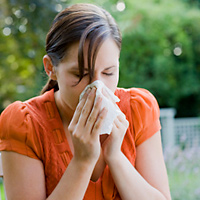
By Dr. Mercola Dust mites, animal dander, molds, and pollen are among the most common environmental triggers of asthma attacks and allergy symptoms. For some, however, a spring or summer thunderstorm may lead to a flare-up of symptoms. Research shows an association between thunderstorm activity and worsening of allergy and asthma symptoms; one study found a 3 percent increase in emergency-room visits for asthma attacks in the 24 hours following thunderstorms.1 As the researchers explained: “While a three percent increase in risk may seem modest, asthma is quite prevalent… and a modest relative increase could have a significant public health impact in the population.” What Causes Thunderstorm Asthma? The phenomenon, known as “thunderstorm asthma,” isn’t so much an issue of people being allergic to rain. […] Read More
